THE TIERGARTEN AND FEDERAL DISTRICT
In 1999, Berlin’s green centre became the government district. Around the Tiergarten, Berlin’s largest and most popular park, stand the Reichstag, the Bundeskanzleramt and Schloss Bellevue, official residence of the President of the Federal Republic of Germany. The sprawling Tiergarten itself is a great place for strolling and cycling, and it also boasts the Landwehrkanal, the Neuer See, the Spree River and Berlin’s zoo. In summer, its lawns are used for soccer games and barbecue parties.
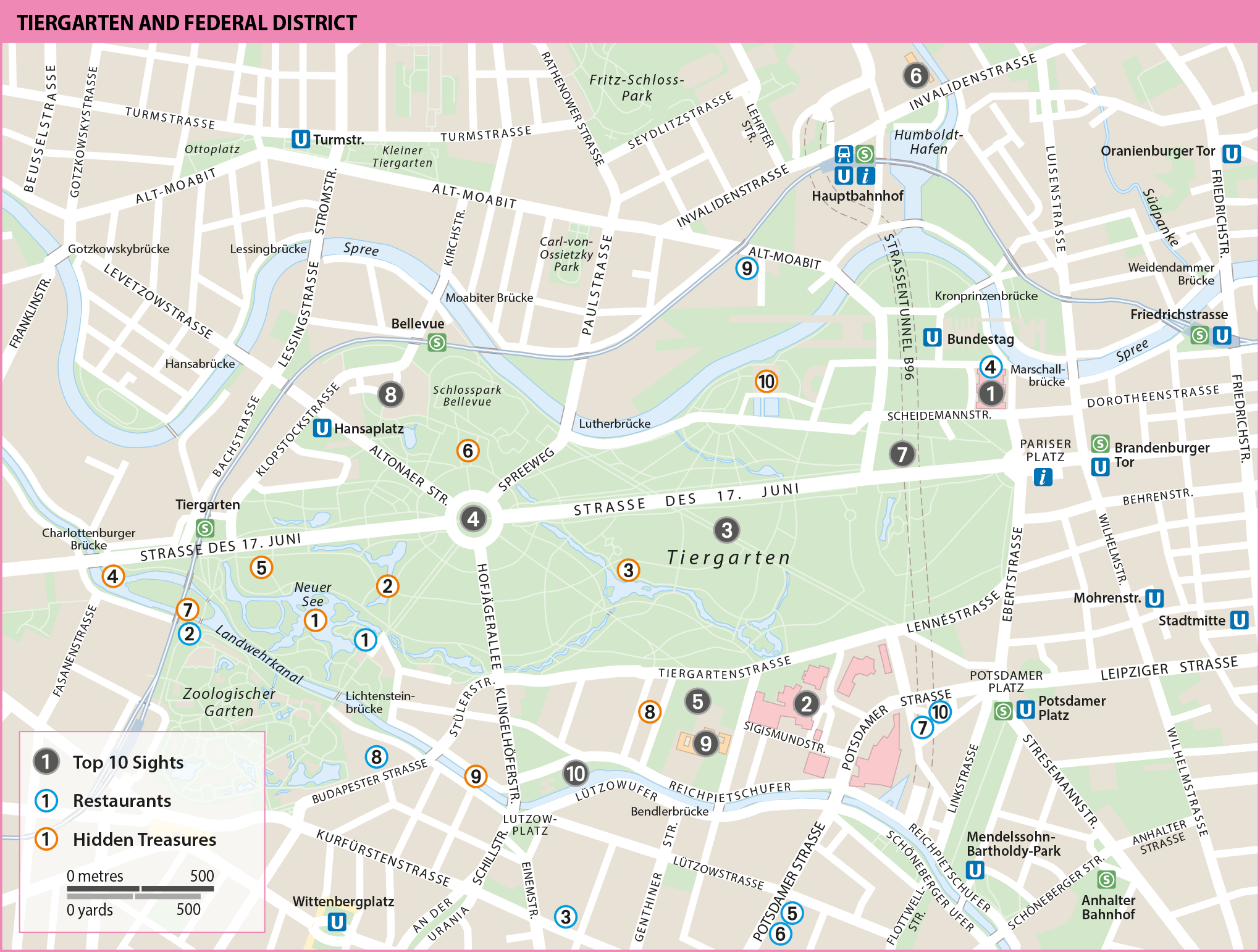
1. Reichstag
More than any of the other landmarks in Berlin, the Reichstag, the seat of the German parliament, has come to symbolize German history.

The majestic Reichstag with its beautiful modern dome
2. Kulturforum
This unique complex (see Kulturforum) of modern buildings features the best museums and concert halls in western Berlin.
3. Großer Tiergarten
![]() Tiergarten
Tiergarten
The Großer Tiergarten is Berlin’s largest park, straddling an area of 200 hectares (494 acres) between the eastern and western parts of the town. Formerly the Elector’s hunting grounds, it was redesigned in the 1830s as a park by Peter Joseph Lenné. At the end of the 19th century, the Siegesallee was established in the east of the park, more than 500 m (1,640 ft) in length, lined by statues of monarchs and politicians. After World War II, the starving and freezing population chopped down nearly all the trees for firewood and dug up the lawns to grow food. Thanks to reforestation since the 1950s, the Tiergarten is today Berlin’s favourite green space and the lungs of the city.
4. Siegessäule
![]() Großer Stern • Adm
Großer Stern • Adm
In the middle of the Tiergarten stands the 62-m- (203-ft-) high Victory Column (see Siegessäule), erected to commemorate Prussian victory against Denmark in the war of 1864. After victory over Austria in 1866 and France 1871, the structure was crowned by a 35-ton gilded statue of the goddess Victoria. There are great views from the viewing platform, 285 steps up.
5. Diplomatenviertel
![]() Between Stauffenbergstr. and Lichtensteinallee as well as along Tiergartenstr.
Between Stauffenbergstr. and Lichtensteinallee as well as along Tiergartenstr.
In the late 19th century, an embassy district sprang up. Most structures were destroyed during World War II, and until German reunification the buildings were left to decay. After the government moved back to Berlin from Bonn in 1999, new life was breathed into the diplomats’ quarter and, thanks to its adventurous architecture, it is now one of Berlin’s most interesting areas. Especially worth seeing are the Austrian and Indian embassies on Tiergartenstraße, the Nordic embassies (see Nordische Botschaften) on Rauchstraße and the Mexican embassy on Klingelhöferstraße.
6. Hamburger Bahnhof
![]() Invalidenstr. 50–51 • Open 10am–6pm Tue–Fri (until 8pm Thu), 11am–6pm Sat & Sun • Adm • www.smb.museum
Invalidenstr. 50–51 • Open 10am–6pm Tue–Fri (until 8pm Thu), 11am–6pm Sat & Sun • Adm • www.smb.museum
Formerly a railway station (see Hamburger Bahnhof), this place is now the Museum für Gegenwart (Museum of the Present Day) and holds contemporary works of art. One of the highlights is the private collection of Erich Marx, with works by Beuys and others.
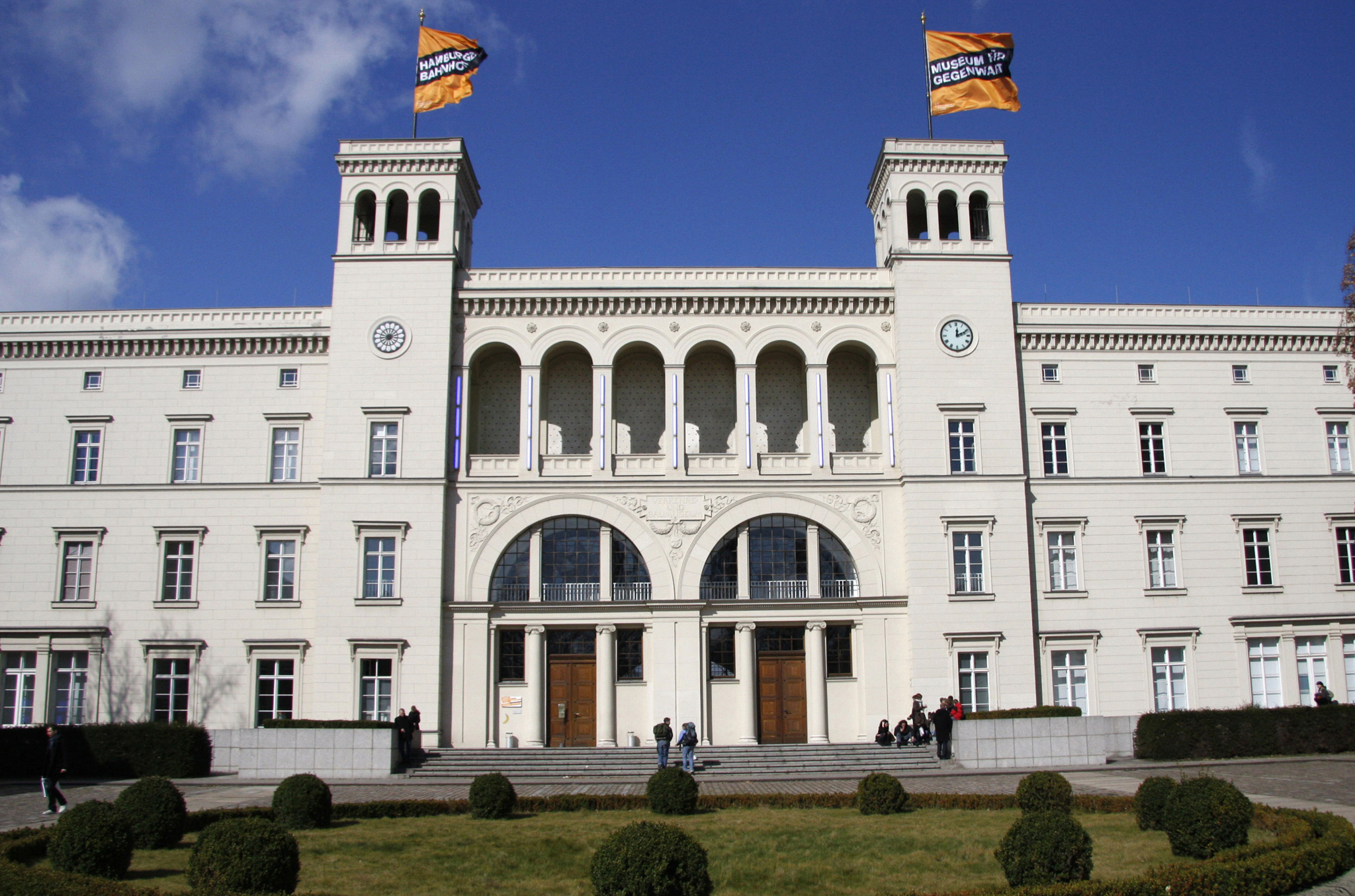
Wall exhibit at Hamburger Bahnhof
7. Sowjetisches Ehrenmal
![]() Str. des 17. Juni
Str. des 17. Juni
The Soviet Memorial was opened on 7 November 1945, the anniversary of the Russian October Revolution. It is flanked by two tanks, supposedly the first to reach Berlin. The memorial commemorates the 300,000 Red Army soldiers who died during World War II in the fight to liberate Berlin. A legend persists that the large column was made from the marble blocks of Hitler’s Reich Chancellery. Designed by Nicolai Sergijevski, the column is crowned by a bronze statue by Lev Kerbel. Behind the memorial, 2,500 Russian soldiers are buried.
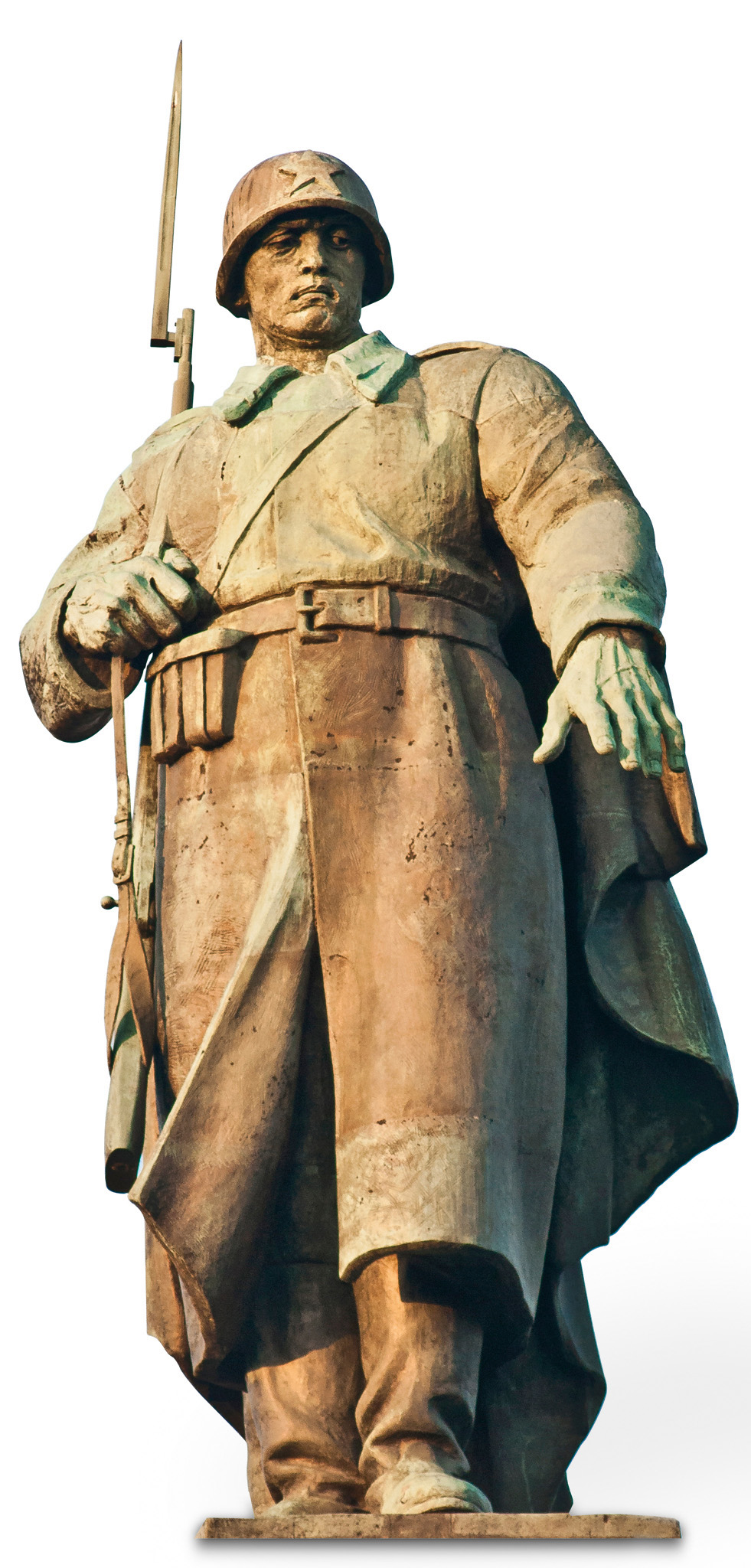
Sowjetisches Ehrenmal
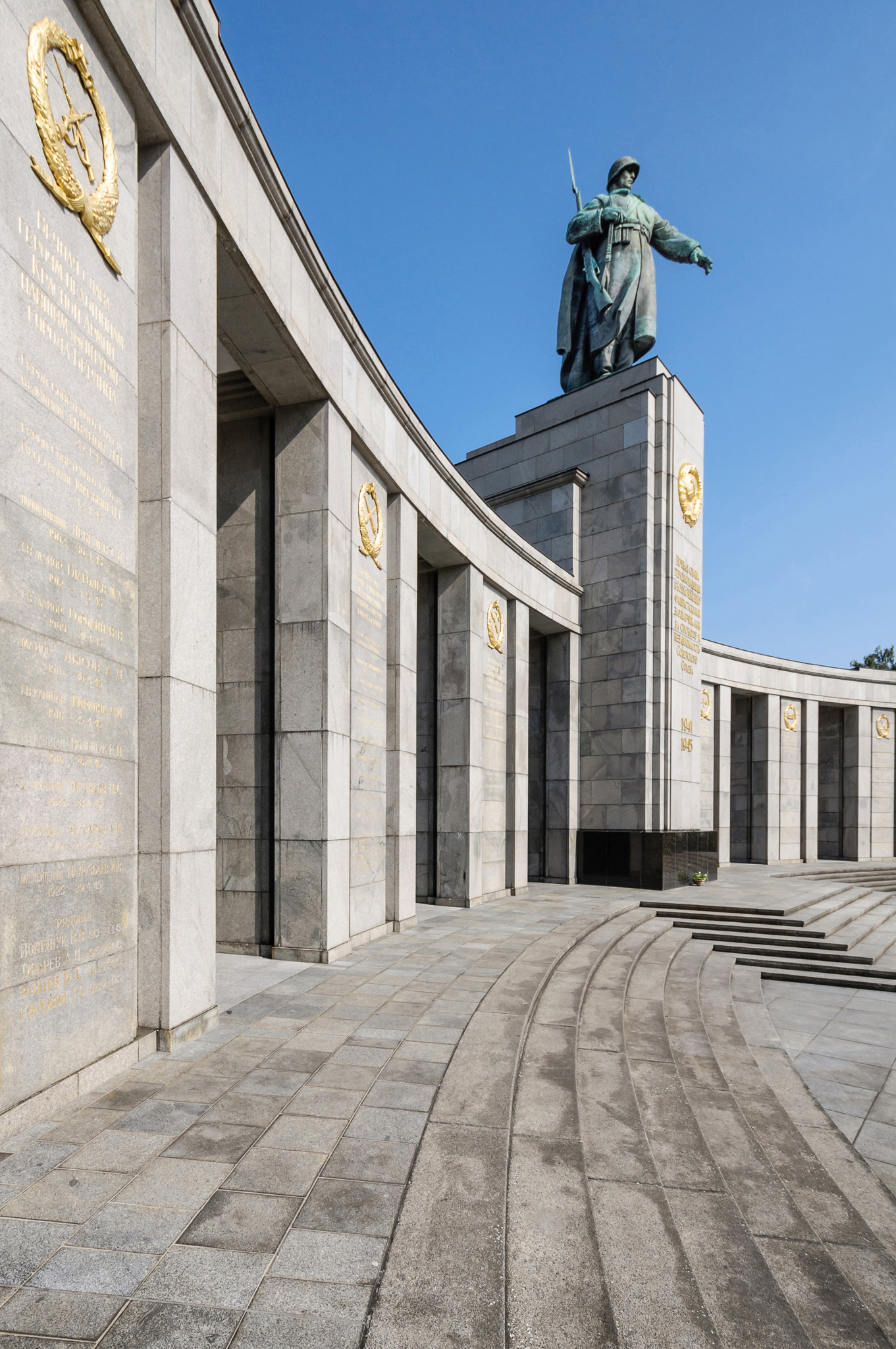
The Sowjetisches Ehrenmal memorial
8. Hansa-Viertel
![]() Tiergarten, Hanseatenweg
Tiergarten, Hanseatenweg
The Hansa estate west of Schloss Bellevue was built for the Interbau architecture exhibition in 1957. World War II bombs had flattened the Tiergarten, and 36 residential complexes were erected in the park, designed by distinguished architects from around the world, including Walter Gropius (Händelallee 3–9), Alvar Aalto (Klopstockstr. 30–32) and Oscar Niemeyer (Altonaer Str. 4–14).
9. Gedenkstätte Deutscher Widerstand
![]() Stauffenbergstr. 13–14 • (030) 26 99 50 00 • Open 9am–6pm Mon–Wed & Fri, 9am–8pm Thu, 10am–6pm Sat & Sun • www.gdw-berlin.de/en/
Stauffenbergstr. 13–14 • (030) 26 99 50 00 • Open 9am–6pm Mon–Wed & Fri, 9am–8pm Thu, 10am–6pm Sat & Sun • www.gdw-berlin.de/en/
Today known as Bendlerblock, this 1930s complex lies behind the former Prussian Ministry of War. During World War II it served as army headquarters. It was here that a group of officers planned the assassination of Adolf Hitler. The attempt failed on 20 July 1944 and Claus Schenk Count von Stauffenberg and others were arrested. Many of them were shot in the courtyard during the night. A memorial, created by Richard Scheibe in 1953, commemorates these events. On the upper floor is a small exhibition documenting the German resistance against the Nazi regime. The Bendlerblock has been incorporated into the Berlin branch of the Federal Ministry of Defence.
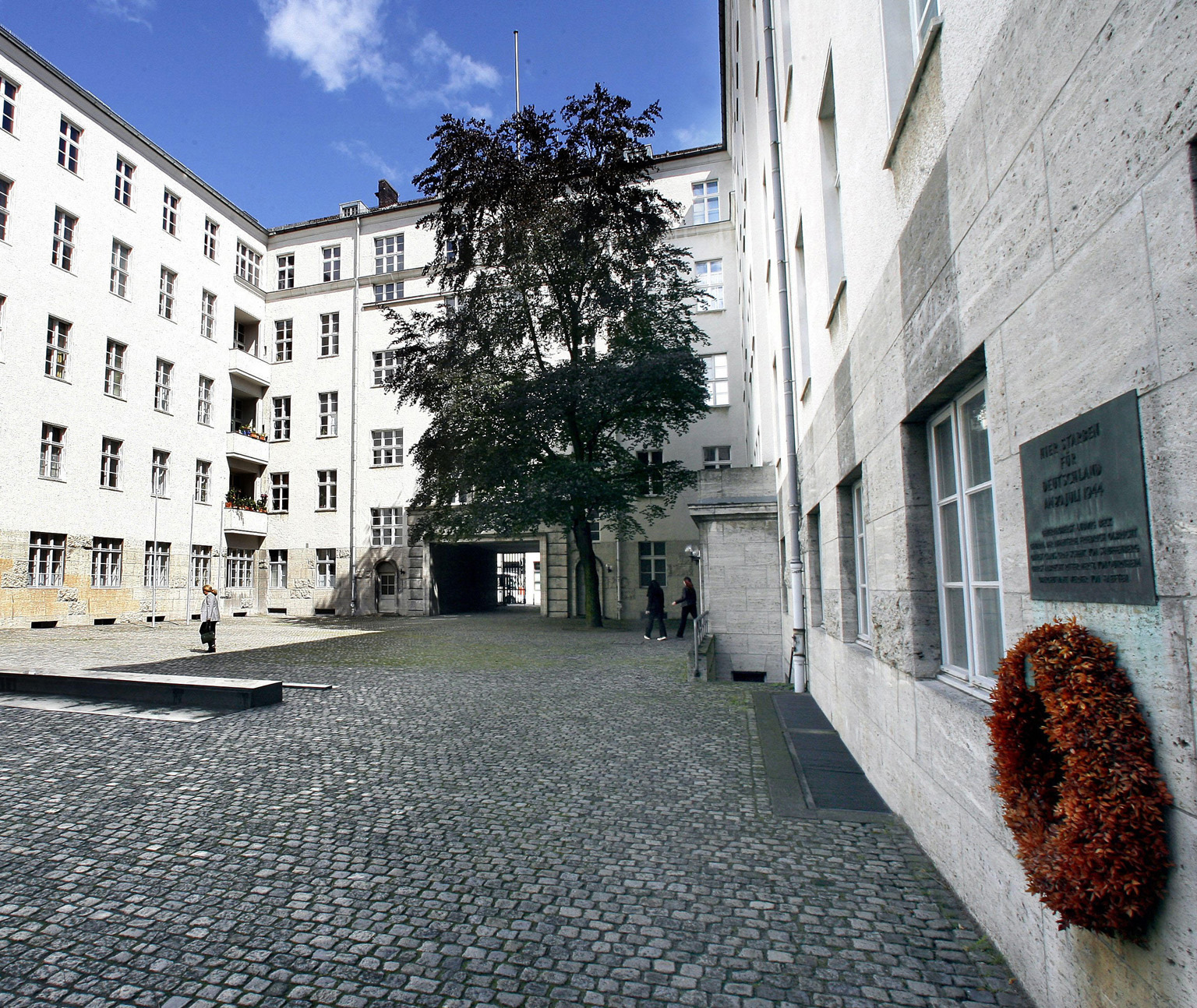
Gedenkstätte Deutscher Widerstand
10. Villa von der Heydt
![]() Von-der-Heydt-Str. 18 • www.preussischer-kulturbesitz.de/en
Von-der-Heydt-Str. 18 • www.preussischer-kulturbesitz.de/en
This late Neo-Classical villa, built in 1860–61 by architects Hermann Ende and G A Linke for one of the city’s most elegant residential areas at the time, is one of the few extant examples of the architectural villa style typical of the Tiergarten. The Prussian Heritage Foundation now has its headquarters here.
PETER JOSEPH LENNÉ
Lenné (1789–1866), one of Germany’s most influential landscape architects, was born into a family of gardeners in Bonn. He studied in Paris and joined the Royal Gardens in Potsdam as an apprentice in 1816. There he met Schinkel and together they set out to design the parks of Berlin and Potsdam in the harmonious style of the time.
A DAY OUT

MORNING
Start your tour of the Tiergarten near the Reichstag. Explore the government district starting with the Federal Chancellor’s Office or the Bundeskanzleramt. Stop at Käfer im Reichstag in the Reichstag building for breakfast. Via John-Foster-Dulles-Allee you will pass the Carillon and the Haus der Kulturen der Welt on the way to Großer Tiergarten. Continue along one of the paths into the park, directly opposite the old Kongresshalle, until you reach Straße des 17. Juni. Turn right to go towards Siegessäule. From there continue along Fasanerieallee in a southwesterly direction until you reach Café am Neuen See for lunch.
AFTERNOON
After lunch, take a stroll through the Diplomatenviertel. From Neuer See, it is only a few steps east along Lichtensteinallee and Thomas-Dehler-Straße until you get to Rauchstraße with its Scandinavian embassies. On Tiergartenstraße you will pass, among others, the embassies of Japan, Italy, India and Austria. Head back to Klingelhöferstraße and walk south, making a small detour for refreshments at Café Einstein. Head back to the canal and continue along Lützowufer until you reach the Kulturforum via Potsdamer Brücke. A good place for an evening meal would be Vox at the Grand Hyatt.
Hidden Treasures
1. Neuer See
![]() S-Bahn station Tiergarten
S-Bahn station Tiergarten
Shimmering in a mysterious emerald green, the largest lake in the Tiergarten is perfect for rowing. Afterwards you can recover in the Café am Neuen See.
2. Löwenbrücke
![]() Großer Weg
Großer Weg
The Lion Bridge, which leads across a small stream near Neuer See, was built in 1838 and is “suspended” from the sculptures of four lions. This idyllic spot is a favourite meeting point in Berlin.
3. Lortzing-Denkmal
![]() Östlicher Großer Weg
Östlicher Großer Weg
There are 70 statues of philosophers, poets and statesmen in Tiergarten. The statue of the composer Lortzing, at one end of Neuer See, is one of the most beautiful.
4. Houseboats
![]() Str. des 17. Juni, Tiergartenufer
Str. des 17. Juni, Tiergartenufer
Docked on the banks of the Spree River are some of the few remaining houseboats in Berlin – an idyllic haven in the middle of the city’s bustle.
5. Gaslights in Tiergarten
![]() At S-Bahn station Tiergarten
At S-Bahn station Tiergarten
With 80 beautiful historic gaslights from different cities illuminating the paths, an evening stroll in the Tiergarten can be a romantic affair.
6. Englischer Garten
![]() An der Klopstockstr.
An der Klopstockstr.
The lovely English-style landscaped garden near Schloss Bellevue is ideal for strolling or relaxing at the Teehaus with coffee and cake.
7. Locks
![]() At the Zoo, S-Bahn station Tiergarten
At the Zoo, S-Bahn station Tiergarten
The two Landwehrkanal locks and the quirky Schleusenkrug beer garden (next to the eponymous lock) are very popular with locals and visitors.
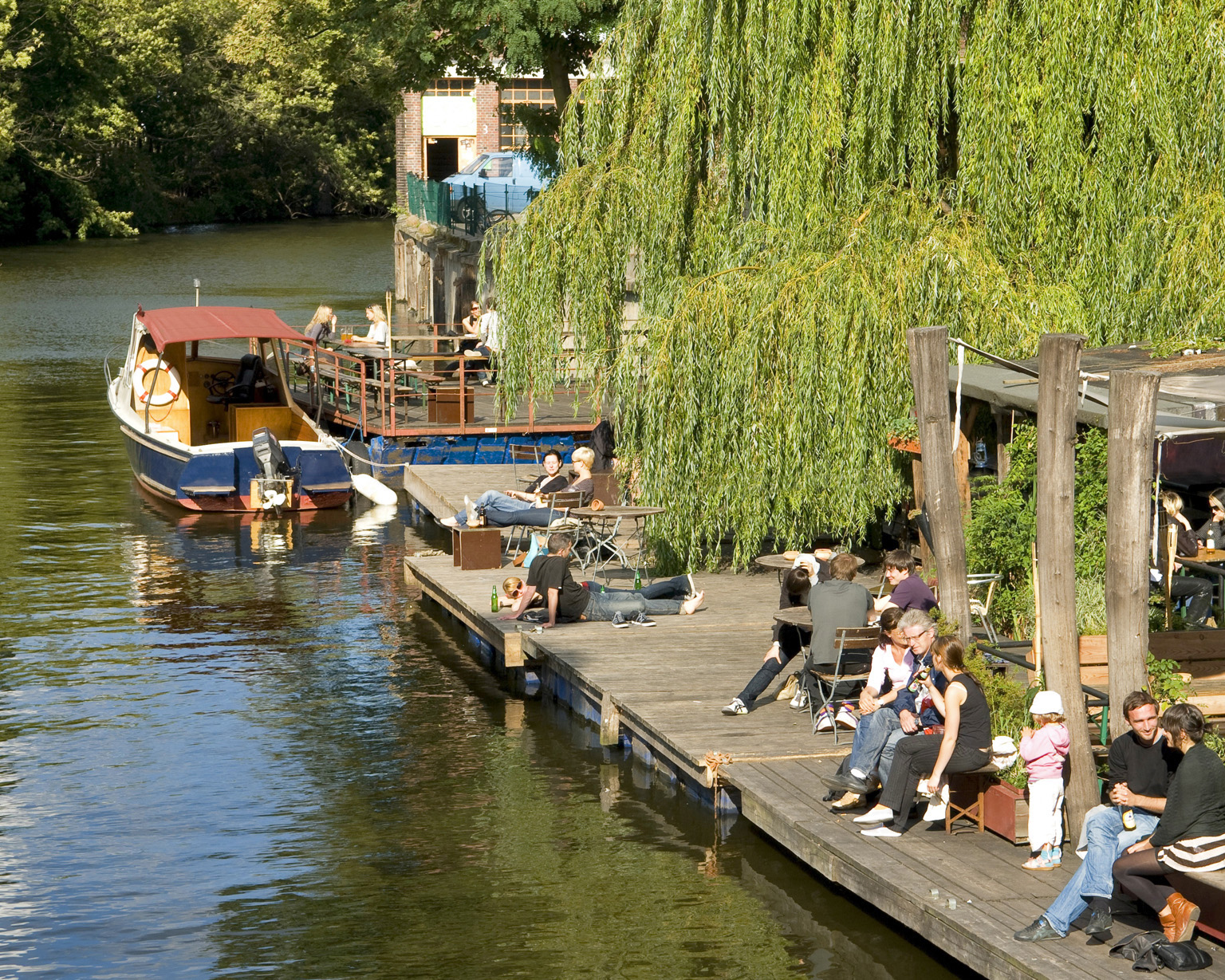
Beer garden on the canal lock
8. Estonian Embassy
![]() Hildebrandstr. 5
Hildebrandstr. 5
In a street next to the ruined Greek Embassy, this building is characteristic of the diplomats’ quarter.
9. Landwehrkanal
![]() Corneliusstr.
Corneliusstr.
The grassy banks of the 11-km (7-mile) long Landwehrkanal are ideal for chilling out.
10. Carillon
![]() John-Foster-Dulles-Allee (Haus der Kulturen der Welt) • Open-air concerts: 3pm Sun May–Sep
John-Foster-Dulles-Allee (Haus der Kulturen der Welt) • Open-air concerts: 3pm Sun May–Sep
The carillon, officially dedicated in 1987, is the largest of its kind in Europe. The 68 bells are rung every day at noon and 6pm in the 42-m (138-ft) high black tower.
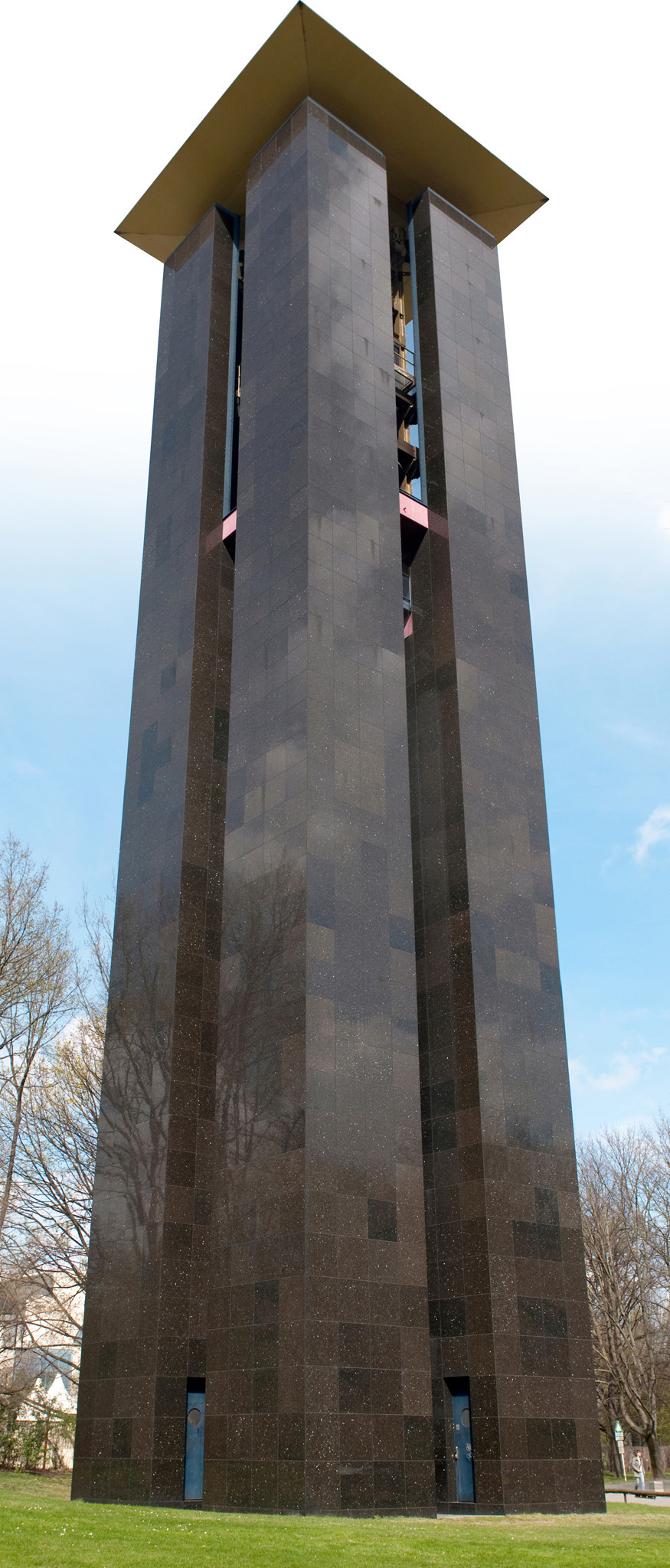
The carillon tower
Restaurants
1. Café am Neuen See
![]() Tiergarten, Neuer See, Lichtensteinallee 2 • (030) 254 49 30 • Open Mar–Oct: 9am–11pm daily; Nov–Feb: 10am–8pm Sat & Sun • €
Tiergarten, Neuer See, Lichtensteinallee 2 • (030) 254 49 30 • Open Mar–Oct: 9am–11pm daily; Nov–Feb: 10am–8pm Sat & Sun • €
On the shore of the lake, this is a restaurant, café and beer garden. The ”Italian breakfast” is delicious.
2. Schleusenkrug
![]() Tiergarten-Schleuse • (030) 313 99 09 • Open 10–1am daily (until 7pm winter) • No credit cards • €
Tiergarten-Schleuse • (030) 313 99 09 • Open 10–1am daily (until 7pm winter) • No credit cards • €
This café, next to a lock, has a beer garden and is popular with students.
3. Café Einstein
![]() Kurfürstenstr. 58 • (030) 26 39 19 18 • Open 8–1am daily • €€
Kurfürstenstr. 58 • (030) 26 39 19 18 • Open 8–1am daily • €€
Based in the villa belonging to the film star Henny Porten, this is the ultimate in Viennese style.
4. Käfer im Reichstag
![]() Platz der Republik • (030) 22 62 99 35 • Open 9am–midnight daily • €€
Platz der Republik • (030) 22 62 99 35 • Open 9am–midnight daily • €€
An ambitious restaurant, better known for its view than its food.
5. Joseph-Roth-Diele
![]() Potsdamer Str. 75 • (030) 26 36 98 84 • Open 10am–midnight Mon–Fri • €
Potsdamer Str. 75 • (030) 26 36 98 84 • Open 10am–midnight Mon–Fri • €
Popular restaurant/bar serving homemade traditional German food. Accepts cash payments only.
6. Panama
![]() Potsdamer Straße 91 • (030) 983 20 84 35 • Open from 6pm Tue–Sat • €€
Potsdamer Straße 91 • (030) 983 20 84 35 • Open from 6pm Tue–Sat • €€
The innovative dishes at this eatery are perfect for tapas-style sharing.
7. Vox
![]() Marlene-Dietrich-Platz 2 • (030) 25 53 17 72 • Open 6:30–11pm daily • €€
Marlene-Dietrich-Platz 2 • (030) 25 53 17 72 • Open 6:30–11pm daily • €€
An elegant restaurant in the Grand Hyatt Hotel, Vox serves a modern fusion of Asian and international dishes. Do not miss the sushi.
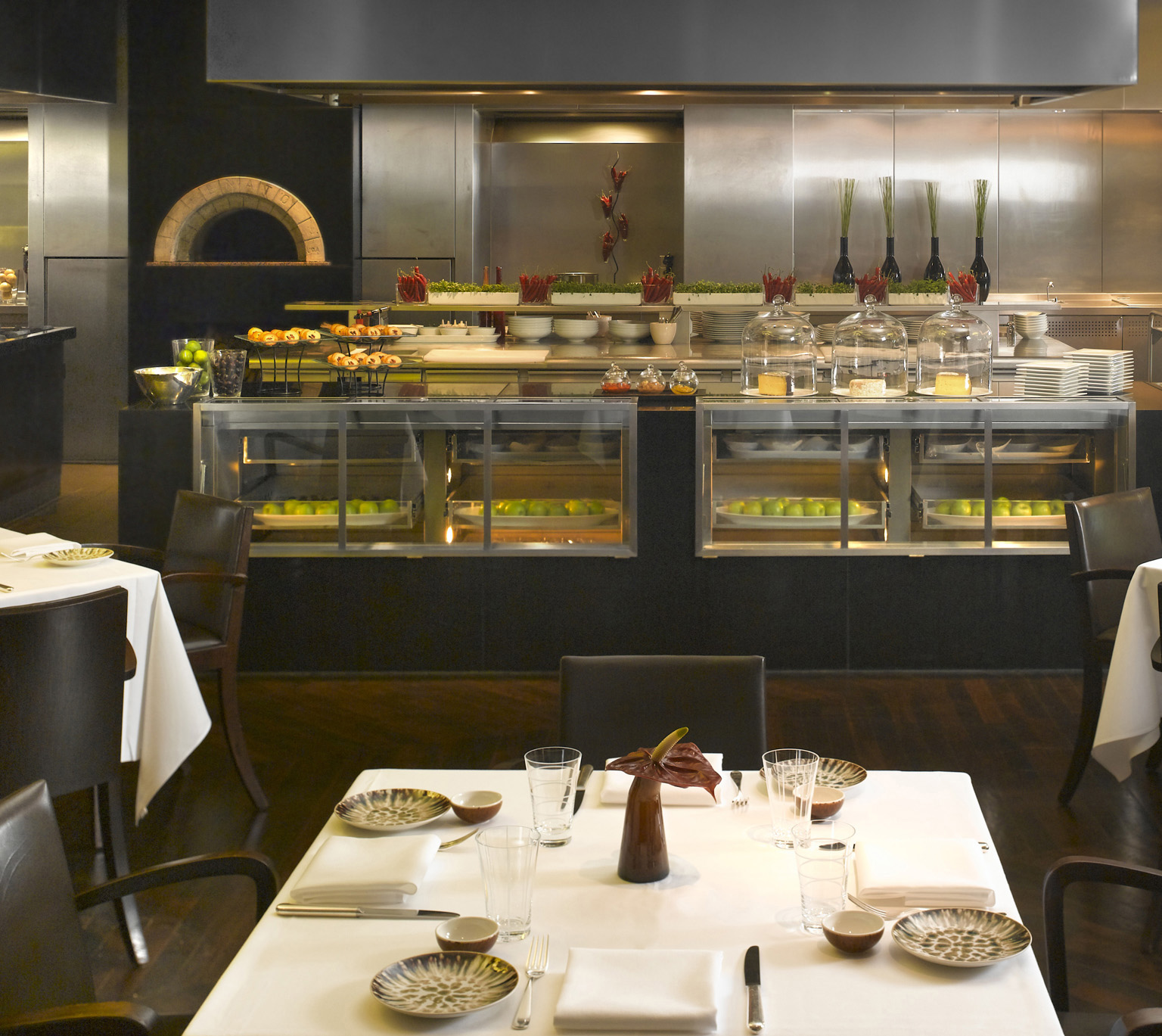
The tastefully decorated Vox
8. Hugos
![]() Budapester Str. 2 • (030) 26 02 12 63 • Open 6:30–9:30pm Tue–Sat • €€€
Budapester Str. 2 • (030) 26 02 12 63 • Open 6:30–9:30pm Tue–Sat • €€€
Excellent gourmet food, stellar views and superb service combine to make Hugos one of the best. This restaurant has a bar and private dining rooms. Their set menus have vegetarian options too.
9. Paris-Moskau
![]() Alt-Moabit 141 • (030) 394 20 81 • Open 6pm–midnight daily • €€
Alt-Moabit 141 • (030) 394 20 81 • Open 6pm–midnight daily • €€
A classic restaurant serving seasonal dishes with an emphasis on game and seafood.
10. Facil
![]() Potsdamer Str. 3 • (030) 590 051 234 • Open noon–3pm & 7–11pm Mon–Fri • €€€
Potsdamer Str. 3 • (030) 590 051 234 • Open noon–3pm & 7–11pm Mon–Fri • €€€
Located on a rooftop, visitors at Facil dine surrounded by bamboo gardens. This gourmet restaurant serves Mediterranean dishes.
